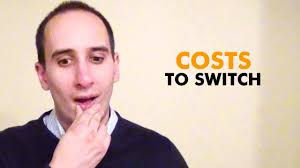A story of a CEO attuned to creating great company culture.
A CEO friend of mine who managed her one-hundred-person remote workforce as a virtual company told me her story of how she welcomed new employees as she grew her firm. Strike that. She over-welcomed her new employees.
Preparing for the new employee
Days before the official start date, she made sure that the new employee’s business cards arrived in the mail, that the employee’s phone and Internet services were up and running, and that an email account was already established. But many of us do that, maybe not so timely.
arrived in the mail, that the employee’s phone and Internet services were up and running, and that an email account was already established. But many of us do that, maybe not so timely.
Then she topped her explanation with: “A few days before the start, a package arrived from us at the employee’s home with a welcome letter, a copy of the CEOs book, and a giant fortune cookie, with the fortune cookie message streamer clearly visible.”
“You will be successful at our company!” the fortune stated.
One pleasant surprise after another
What a great touch – especially for someone expected to be self-motivated enough to work long hours from home, to get to know fellow employees through Zoom, Slack or Teams, and texting, and to be productive immediately when hitting the ground.
The benefits of hitting the ground running.
[Email readers, continue here…] It started me thinking. How many days or weeks or even months do we expect a new employee to take in becoming acclimated to our company and its culture, to the marketplace, and to our ways of doing business? For example, most of us expect a salesperson to be truly productive only after about six months of building a territory or client base. But isn’t there a better way to approach this expensive process of acclimation?
Special considerations for salespeople
 For a salesperson, how about paying an override commission to another salesperson for a short period to help find and close new business? Or how about helping the employee gain confidence by handing the first several accounts to the new person ready to close? How about assigning a big brother or sister to each new employee to show them the culture and process? How about teaching a class in corporate culture yourself to one or more new employees? Some of us have done one or more of these things. But what could we have done better to launch a new employee successfully?
For a salesperson, how about paying an override commission to another salesperson for a short period to help find and close new business? Or how about helping the employee gain confidence by handing the first several accounts to the new person ready to close? How about assigning a big brother or sister to each new employee to show them the culture and process? How about teaching a class in corporate culture yourself to one or more new employees? Some of us have done one or more of these things. But what could we have done better to launch a new employee successfully?
The outcome from “over-welcoming”
My CEO friend created a great company with a culture so strong, every single employee was able to work from their home, wherever in the world it might be, and contribute at the highest level to the success of the enterprise. And oh, yes, she sold her company recently for a tidy sum to a buyer anxious to spread such enviable practices throughout the parent organization.
So, considering the benefits, maybe we should start with a surprise fortune cookie with a personal welcome message.

 start in 2015, the number of registered users has “suddenly” climbed from 45 million in 2017 to a reported 300 million by the end of 2020. That compares with a reported 330 million for Twitter which had a nine-year head start and so much more free press from famous users over the years.
start in 2015, the number of registered users has “suddenly” climbed from 45 million in 2017 to a reported 300 million by the end of 2020. That compares with a reported 330 million for Twitter which had a nine-year head start and so much more free press from famous users over the years. Fourth: measurement. If you can’t measure the results of your attempts to gain a viral response, how can you know when to focus upon reinforcing or changing the effort? Well-tuned metrics are an absolute must. And the tools for most are available, sometimes free, for the educated marketer. You cannot be successful if you cannot measure the results of your effort.
Fourth: measurement. If you can’t measure the results of your attempts to gain a viral response, how can you know when to focus upon reinforcing or changing the effort? Well-tuned metrics are an absolute must. And the tools for most are available, sometimes free, for the educated marketer. You cannot be successful if you cannot measure the results of your effort. times and come to market too soon or too late. We might not have researched the market diligently or used a focus group or other market research. Well, the good news is that great teams are not bound by their original product or marketing plan. Greatness finds one definition in management’s ability to “pivot,” or change the plan in reaction to its early response from the marketplace.
times and come to market too soon or too late. We might not have researched the market diligently or used a focus group or other market research. Well, the good news is that great teams are not bound by their original product or marketing plan. Greatness finds one definition in management’s ability to “pivot,” or change the plan in reaction to its early response from the marketplace. even checking accounts. The firm grew to dominate its new field, create an infrastructure to allow any of its current 100,000 retail stores to simple activate or load the card with money from any cash register. It replaced Western Union as the preferred way to send money across great distances. And it built a billion-dollar market and then some – where the original vision and plan might have restricted the then-small company to a tiny percentage of that.
even checking accounts. The firm grew to dominate its new field, create an infrastructure to allow any of its current 100,000 retail stores to simple activate or load the card with money from any cash register. It replaced Western Union as the preferred way to send money across great distances. And it built a billion-dollar market and then some – where the original vision and plan might have restricted the then-small company to a tiny percentage of that. moving from a competitor’s product or service to yours. Offer incentives to existing customers to stay, and for competitor’s customers to switch. Protect your base with incentives to stay that are intangible – such as membership in an insider’s club, access to special deals not available to others, and attention from the executives at the top.
moving from a competitor’s product or service to yours. Offer incentives to existing customers to stay, and for competitor’s customers to switch. Protect your base with incentives to stay that are intangible – such as membership in an insider’s club, access to special deals not available to others, and attention from the executives at the top. First, I have not received a hand-written letter other than a greeting card from any business associate in what feels like decades. I was in such shock, I did not respond in kind. What to do? Pull out a piece of stationery that had been sitting unused for over a decade and write in longhand? You aren’t supposed to respond using a less personal vehicle than the original one. So, email was out. A phone call might have done it, but not with the elegance of the original correspondence. Now, every time I turn from my desk to the credenza behind, I see that letter and gift. I am not willing to just file the letter or put the gift on the shelf. That’s the power of a great outreach from the top.
First, I have not received a hand-written letter other than a greeting card from any business associate in what feels like decades. I was in such shock, I did not respond in kind. What to do? Pull out a piece of stationery that had been sitting unused for over a decade and write in longhand? You aren’t supposed to respond using a less personal vehicle than the original one. So, email was out. A phone call might have done it, but not with the elegance of the original correspondence. Now, every time I turn from my desk to the credenza behind, I see that letter and gift. I am not willing to just file the letter or put the gift on the shelf. That’s the power of a great outreach from the top. fund daily operations or growth can be daunting. The same is true about marketing. If you don’t directly engage the potential customer at the right time, place and mood, you are at a disadvantage from the start. There are too many competitors for a customer’s time and money to make an error in your approach and offer.
fund daily operations or growth can be daunting. The same is true about marketing. If you don’t directly engage the potential customer at the right time, place and mood, you are at a disadvantage from the start. There are too many competitors for a customer’s time and money to make an error in your approach and offer. market, about the expense in overhead needed to stay in the game. Most of all, I am surprised at that typical person’s inexperience in the marketing arena and understanding of the importance of marketing to the success of the product.
market, about the expense in overhead needed to stay in the game. Most of all, I am surprised at that typical person’s inexperience in the marketing arena and understanding of the importance of marketing to the success of the product. “The most important question on a survey is, ‘How would you feel if you could no longer use this product?’” He goes on to quantify the response. If more than forty percent of the respondents say they would be “very disappointed,” then the product should go viral and be a great success. Conversely, if less than ten percent say this, those companies or products would have a hard time getting traction in the marketplace.
“The most important question on a survey is, ‘How would you feel if you could no longer use this product?’” He goes on to quantify the response. If more than forty percent of the respondents say they would be “very disappointed,” then the product should go viral and be a great success. Conversely, if less than ten percent say this, those companies or products would have a hard time getting traction in the marketplace. Most of us know of the “net promoter score” which is the ultimate survey. One question. “On a scale of zero to ten, how likely are you to recommend our business to a friend or colleague?” You’ll find more about this with a simple search.
Most of us know of the “net promoter score” which is the ultimate survey. One question. “On a scale of zero to ten, how likely are you to recommend our business to a friend or colleague?” You’ll find more about this with a simple search. chairman, I made the decision to go to market with a brand-new product that had never before been exposed to my customer’s marketplace. In each case, after overwhelming publicity, certainly noticed by a great number of potential decision makers, and after record-breaking sessions at industry trade shows to introduce these to the potential buyers, the products failed in the marketplace.
chairman, I made the decision to go to market with a brand-new product that had never before been exposed to my customer’s marketplace. In each case, after overwhelming publicity, certainly noticed by a great number of potential decision makers, and after record-breaking sessions at industry trade shows to introduce these to the potential buyers, the products failed in the marketplace. completely unknown. A marketing professional or the marketing department certainly can work to obtain good press, appealing to curious journalists and early adapters. Early meetings with potential customers will yield enthusiasm for a “free test” of the new product. But if it is a radical departure from the comfort zone, the cost of promoting and marketing the new product will be beyond the capability of most small or medium sized companies.
completely unknown. A marketing professional or the marketing department certainly can work to obtain good press, appealing to curious journalists and early adapters. Early meetings with potential customers will yield enthusiasm for a “free test” of the new product. But if it is a radical departure from the comfort zone, the cost of promoting and marketing the new product will be beyond the capability of most small or medium sized companies. become the best marketer you can be, even if you are a first-time entrepreneur or a seasoned CEO?
become the best marketer you can be, even if you are a first-time entrepreneur or a seasoned CEO? [Email readers, continue here…]
[Email readers, continue here…]  to define how to market well, including the four P’s of marketing (1): product, price, promotion and place. This is considered to be the producer-oriented model. These are still the driving focus behind most marketing courses, and deserve to be so.
to define how to market well, including the four P’s of marketing (1): product, price, promotion and place. This is considered to be the producer-oriented model. These are still the driving focus behind most marketing courses, and deserve to be so. C=Customers, and more customers. Marketing should provide a pool of ready to listen customers, no matter what the price or complexity of the product. More importantly for management, finding a way to focus on extreme customer service will be the most inexpensive, effective marketing tool of all. Existing customers have low acquisition costs, addressing the “D” in the equation. Extremely happy existing customers are the greatest marketers you will ever have.
C=Customers, and more customers. Marketing should provide a pool of ready to listen customers, no matter what the price or complexity of the product. More importantly for management, finding a way to focus on extreme customer service will be the most inexpensive, effective marketing tool of all. Existing customers have low acquisition costs, addressing the “D” in the equation. Extremely happy existing customers are the greatest marketers you will ever have. spreadsheet, start with expected revenue by month. Then they calculate cost of sales, and then project their expenses, to find the bottom-line profit or loss each projected month.
spreadsheet, start with expected revenue by month. Then they calculate cost of sales, and then project their expenses, to find the bottom-line profit or loss each projected month. amount needed to finance the business through equity or debt financing. This new tool gives you that number plus the amount needed to make the business a viable entity with a chance of long-term survival and growth. The longer the time it takes to break even or get to that magic ten percent net, the higher the number of dollars needed. Sometimes, the difference is a reminder to consider a reduction of expenses if revenues cannot be raised from projected levels.
amount needed to finance the business through equity or debt financing. This new tool gives you that number plus the amount needed to make the business a viable entity with a chance of long-term survival and growth. The longer the time it takes to break even or get to that magic ten percent net, the higher the number of dollars needed. Sometimes, the difference is a reminder to consider a reduction of expenses if revenues cannot be raised from projected levels.